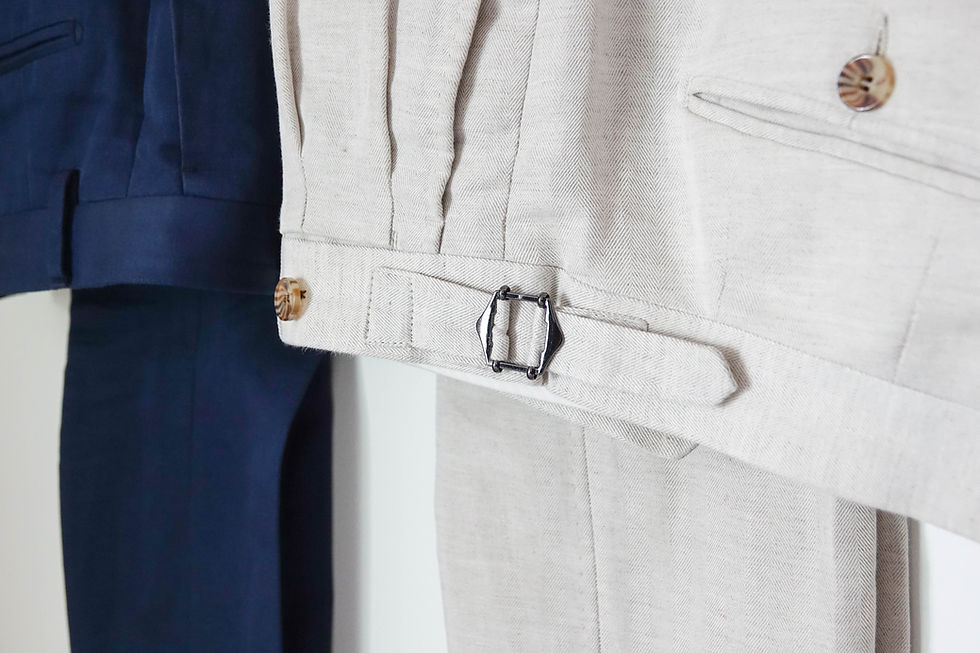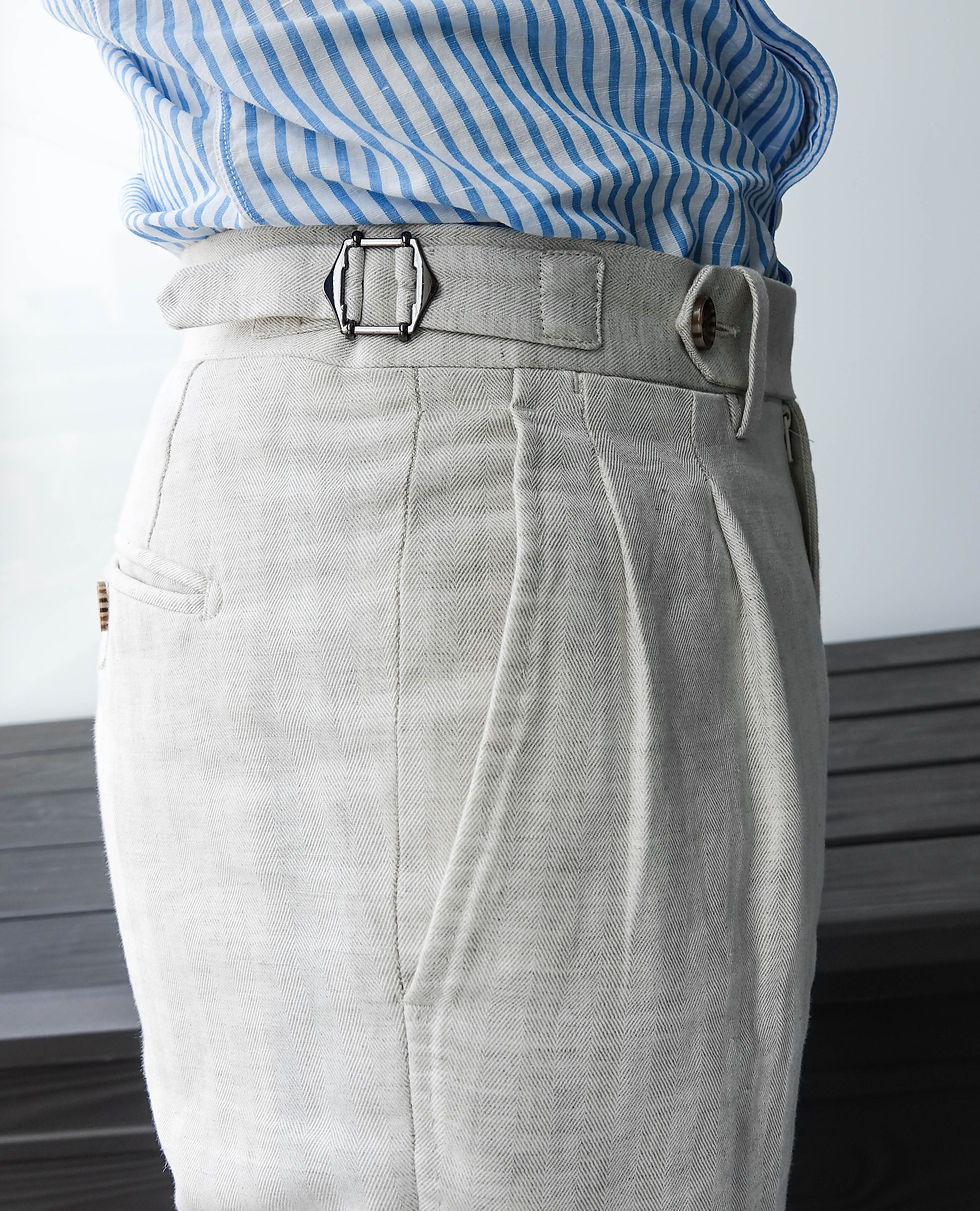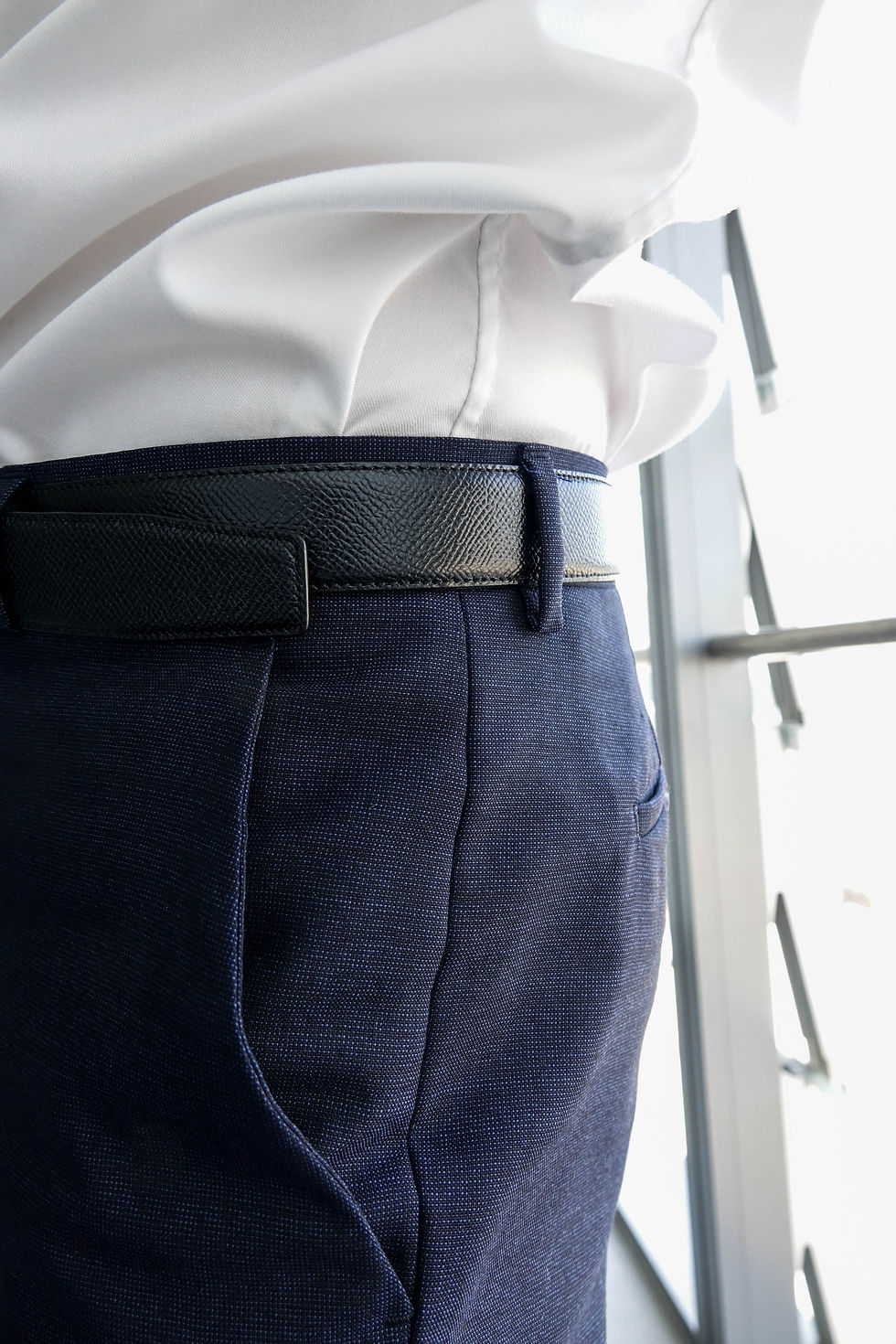Belts Loops VS Side Adjusters: Which one is Better?
- Linus Chu

- Jul 10, 2018
- 4 min read
Updated: Jan 13, 2019

Belts -- extremely stylish piece to pair it with our formal outfits yet always giving us a headache because it just doesn't feel right wearing them sometimes. Let's face it, all of us have faced some sort of chastisements either when we are not matching our dress shoes with the right color of belts or when we are not wearing belts with dress pant
In today's article, I want to introduce you all to an alternative solution -- side adjusters. By comparing side-adjusters to belt-loops; I hope, by the end of the article, you would have a better idea on what you could do to avoid the above scenarios again.
First off, what are side adjusters? Basically, side adjusters refer to the attachments on the side of your trousers that allow you to modify the width of the waistband. What this does is that even if the width of your waist fluctuates a lot, you could still fit in your trousers with ease.
Traditionally, it is more often used in higher-grade dress pants and rarely found on jeans or chinos. So you shouldn't feel left out if this is the time you are seeing this.

Side-adjusters come in many different versions. The most commonly seen is the metal side adjuster as demonstrated above. Functioning as a pulley system, you could tighten the waistband when you pull the straps. What it does precisely is that it makes the extra fabrics on the waistband to fold on itself in a subtle manner so the circumferences of the waistband decreases.
There are multiple-types of shapes and metals that could be used for the buckles as well. However, whether it is in a hexagon-shape, rectangle-shape, or other shapes, the pulley system works just the same.
Despite being the smartest type of side-adjusters, the buckle side-adjuster comes with a serious drawbacks -- you can only narrow the waistband but not the other way around. What this means is that when you first try on the trousers, make sure you are at your largest so you could narrow it down up to 5cm on each side when necessary.

Another type of side-adjusters is the button side adjusters. What this system does is usually having an elastic strip of fabric across the back of the waistband so you could tighten it to the most suitable button you have on your pair of pants.
Nonetheless, there are two things that I don't really like about this design. Firstly, it is less adjustable than the metal side adjusters. Although you might be able to 'enlarge' the circumferences of the waistband, you could only stick to several 'preset' width -- which is dependent on how many buttons you have. This, in other words, fall into a similar category with belts to some extent.
The second drawback is that if you happened to use elastics that have poorer quality, you would find them losing the ability to 'bounce back' through time. If you are likely to something that is lasting, this perhaps is not a good choice.
There are many types of side adjusters out there and it is impossible to include all of them within this article. Some of the more 'unique' designs that I saw even attempted to take inspirations from both metal side-adjusters and button side-adjusters. As much as I think they are quite remarkable, I think they are novelty stuff that would not be serve for the purpose of being timeless. Thus, I would recommend you to go with something more conventional.

At this point of the article, you may ask why does belt-loops design even exist when side-adjusters are actually that great? While the exact reason to how belt-loops became more popular than side-adjusters remains unknown, factors such as mass production may have contributed to how trousers are no longer designed to fit specifically to the individual but the other way around.
As a result, belts became more and more popular; making side-adjusters 'outdated'. This is unfortunate, however, because you tend to feel less comfortable with Belt-Loops. In order to tighten the waistband, you have to decrease the circumferences of belt. Yet, this would lead to a notable amount of fabrics folding on each other thus reducing the comfortability of the trousers. Additionally, what usually happens when you pair a trousers with a big waistband and a shorter belt is that some parts of the waistband tend to slide down and that just doesn't look very nice.
On top of that, belts these days have been transformed as a way to show off. It is not uncommon to see people pair their dress pants with belts from luxury fashion brands on the streets even if they seem unmatched with each other.

So this brings us to the final question, which type of trousers should you get? My answer is -- it depends.
The Belt-Loops type of person
The Belt-Loops would be a good choice for you if...
your waist size does not fluctuate very often
you have a lot of belt loops trousers already and are willing to get more belts for your wardrobe
you use belts to make the trousers to stand out
you are a tall person who wants to use belt to make yourself look shorter
you wear casual outfits more often
The Side-Adjusters type of person
The Side-Adjusters would be a good choice for you if
your waist size changes frequently
you always have the issue of not being able to match the right belt with the right pair of shoes
you are a shorter person who thinks wearing belts would provide a discontinuation between your torso and your lower body thus making you shorter
The Belt Loops vs Side Adjusters have been an aged old debate in the world of menswear. There is no exact answer on which one is right and which one is wrong; it is all about personal preferences. I hope this article could let you have a better idea on which one matches your style better.
Are you more of a belt-loops type of person or a side-adjusters type of person? Comment down below to let me know!



Hey Linus, I am trying to get side adjusters to help my tailor with his stock for some trousers. Do you have any tip where one could buy them? Kind regards, Mihai